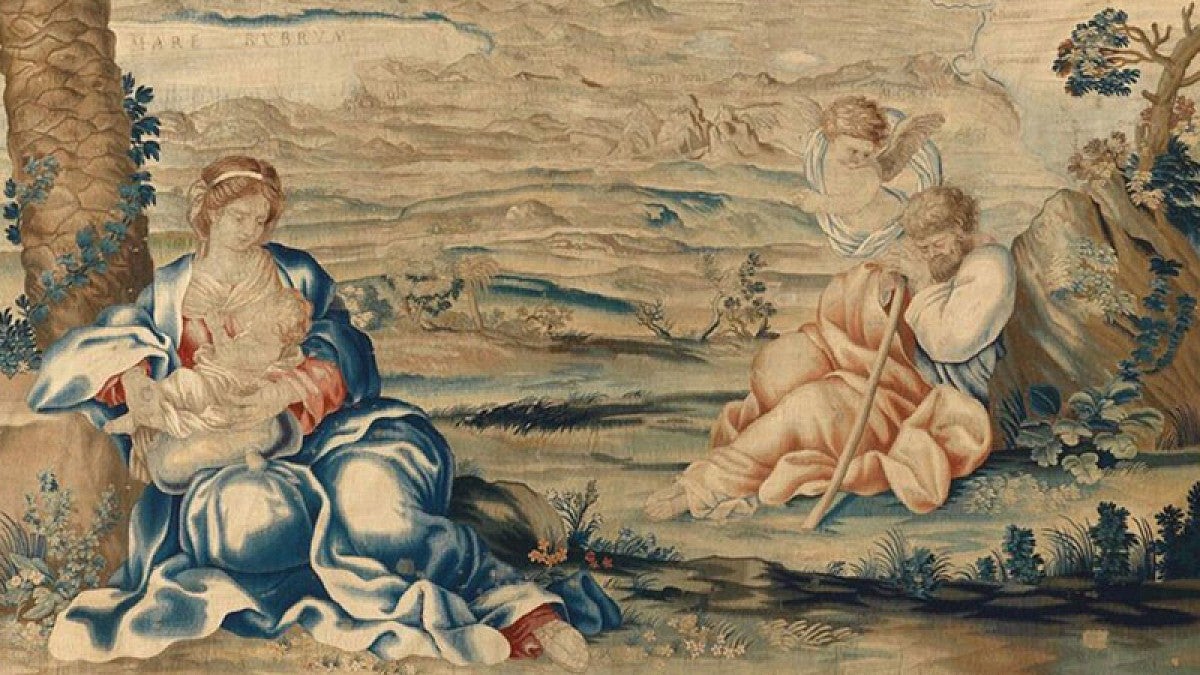An exhibition of rare Italian tapestries will have an early unveiling Sept. 22 at the Jordan Schnitzer Museum of Art, the day before the collection is officially open to the public.
Titled “The Barberini Tapestries: Woven Monuments of Baroque Rome,” the exhibit features one of Cardinal Frencesco Barberini’s most renowned tapestry series, “Life of Christ,” which is on loan from the Cathedral of St. John the Divine in New York City. A free public reception will be held Friday, Sept. 22, from 6 to 8 p.m.
The exhibition is the only West Coast showing of the tapestries. It is curated by James Harper, an art history professor at the UO, and Marlene Eidelheit, director of the textile conservation laboratory at the Cathedral of St. John the Divine.
The 12-panel series was designed by baroque master Giovanni Frencesco Romenelli in the 17th century. Though often loaned out for ceremonies at the Vatican and other institutions in Rome, the tapestries were housed at the Barberini family palace before coming to the United States at the end of the 19th century.
They were some of the first gifts acquired by the Cathedral of St. John the Divine and are considered some of the greatest baroque art treasures in the U.S. Newly restored, this exhibit will offer an rare glimpse into 17th-century Roman craftsmanship and imagination.
The panels are massive –– more than 15 feet tall and 12 to 19 feet long –– so they will be installed in the Soreng Gallery at the museum. That space usually is devoted to Chinese art, but it was the only space large enough for the exhibit to fit.
The museum’s staff has created a room-within-a-room, making an innovative installation perfectly sized to the tapestries.
“While most American museums hang tapestry like paintings, with plenty of white wall space around each object, our intention here is to recreate a ‘baroque hang’ in the taste of the 17th century,” Harper said. “We will be hanging the tapestries to create an enveloping, wraparound effect. These things are meant to overwhelm the senses, and I think that museum visitors will be surprised by the power of the experience.”
Tapestries used to be some of the most prized objects in a collection. Not only were they beautiful, but they were useful in keeping a palace warm and they could be easily transported.
Some of the “Life of Christ” tapestries were seriously damaged by a fire in 2001, but the textile conservation laboratory has spent the last 16 years restoring them. Part of the exhibition will be a glimpse into the methods used to return the damaged pieces to their former glory.
The pieces will also be accompanied by rare books, period objects and computer kiosks offering detailed background information. The interactive features are available on the exhibition’s website.
The Jordan Schnitzer Museum of Art is open 11 a.m. to 8 p.m on Wednesdays, and 11 a.m. to 5 p.m. on Thursdays through Sundays. Admission is $5 for adults, $3 for senior citizens; and free to those aged 18 and under, members, college students with ID and UO faculty, staff and students.
For more information about “The Barberini Tapestries” exhibit, contact Debbie Williamson Smith at 541-346-0942 or debbiews@uoregon.edu.


